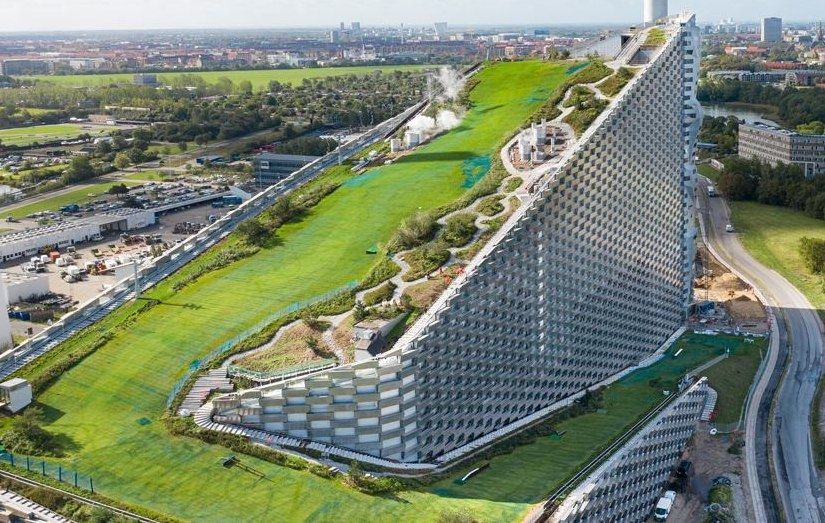How Cities are Going Green: Embracing Sustainability and Nature in Urban Design ft. Rooftop Ski slope!

Hi All,
Today, taking a small mind break from the 'SVB' news, I wanted to introduce a short video clip on a fascinating sustainable building in Denmark. It is called CopenHill — an innovative, climate-positive waste-to-energy plant towering above the city’s downtown that doubles as an urban ski slope. (Side note: One of the cool things about this video is that you can also see how waste is being managed in Demark. Seeing the actual images put everything into perspective. Have you ever wondered about where your trash goes once you take them out? LANDFILL.)
Cities are responsible for about 70% of global energy consumption and also responsible for between 40-50% of greenhouse gas emissions. Sustainability is becoming an increasingly important aspect of urban design as cities seek to reduce their environmental impact and promote resilience. Green buildings and infrastructure, sustainable transportation solutions, and circular economy principles are all key areas of focus. Cities around the world are implementing a range of strategies to embrace sustainability, from using renewable energy sources to promoting active transportation and sustainable food.
When I was at NYU, I also took a couple of 'Urban Design and Architecture Studies' classes thinking that I would minor in them (In my opinion, the field of architecture is a prime example of human intelligence resulting from the perfect fusion of art and science). I dreamed about the days I can design a city where we can redistribute resources more effectively and bring nature back to the urban platform, creating community-oriented habitats for both humans and animals, incl. NATURE! But as you can see, I had to defer my dream to my next life. :)
Let me know if you have your favorite sustainable buildings around the world that I can also add to the blog!
BONUS! Here is another awesome video you should check out if you want to see how cities are embracing NATURE and SUSTAINABILITY these days!
In this video, urban designer Alex Washburn, former Head of Urban Planning for the City of New York, highlights how cities are reconsidering their relationship with nature and developing a more symbiotic future. I was surprised to find out he was in charge of some of my favorite projects in Manhattan such as 'The High Line' and 'Time Square Pedestrian Park'. He underscores by designing cities, buildings, and homes that are compatible with a low-carbon future, we can help facilitate a transition to a more resilient, low-carbon future.
![Sustainable/Impact Investing] Regulations Cheatsheet - State of Play (December 2025)](/content/images/size/w720/2025/12/Screenshot-2025-12-08-073043.png)
![Obsidian Brief] When Money Becomes Software: AI, Stablecoins & Bitcoin — Implications for Sustainable and Impact Investing](https://images.unsplash.com/photo-1657408056887-c8c627f7574a?crop=entropy&cs=tinysrgb&fit=max&fm=jpg&ixid=M3wxMTc3M3wwfDF8c2VhcmNofDF8fHN0YWJsZWNvaW58ZW58MHx8fHwxNzY0NzM0MTExfDA&ixlib=rb-4.1.0&q=80&w=720)
![Finance | Leadership] How I Built a Global Career in Finance: A prelude to the upcoming series: Breaking Into Finance](https://images.unsplash.com/photo-1676471049029-f93852da351d?crop=entropy&cs=tinysrgb&fit=max&fm=jpg&ixid=M3wxMTc3M3wwfDF8c2VhcmNofDl8fG1vdW50YWluJTIwZXZlcmVzdHxlbnwwfHx8fDE3NjQwNTgyMjB8MA&ixlib=rb-4.1.0&q=80&w=720)